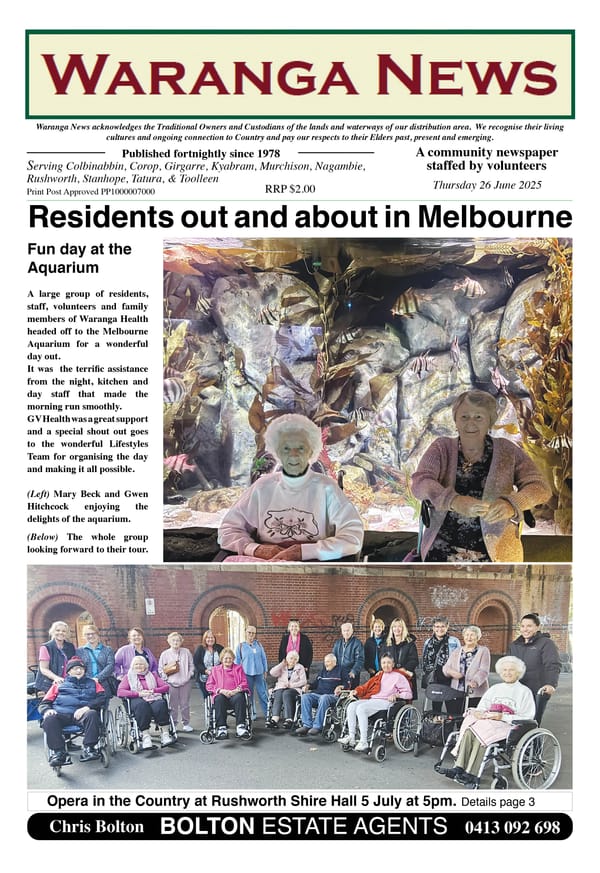15. Chinese in the pastoral industry

We tend to think of the Chinese who came to the Waranga area in the 19th century as being involved almost exclusively in gold mining. However, the new arrivals did engage in other occupations. A number of them worked in the pastoral industry as employees in roles such as shepherds and hut keepers. Gold mining was not always viable, especially in dry periods on the Waranga goldfields. Having alternative work would have brought in some funds, while allowing the men to keep an eye on their claims as they waited for the all-important rain to allow them to continue operations.
During the gold rushes, there was a general shortage of labour available to work on the squatting runs. Many of the employees who had been working on the runs disappeared to the latest rush, which may have been in another part of the state. It may also have been the case that the Chinese were better and more reliable workers, and preferred by the station owners. Waranga (later Waranga Park) station was one of the local runs that employed Chinese men on a regular basis in the 1860s.
WARANGA PARK
In her history of Waranga Basin1, Joyce Hammond mentions that there were 13 Chinese workers at Waranga Park run, although she doesn’t say when this was, or provide the source of the information. However, newspaper reports mention Chinese men working for the squatter William Gunn during the 1860s.
In 1864, Gunn was in trouble with the authorities for having scabby sheep. Scab was a disease that threatened the pastoral industry, so strenuous efforts were made to contain the disease. Gunn was actually dobbed in by a fellow squatter. A government inspector found a flock of 1400 sheep with scab and “two Chinamen were shepherding the flock”. He went on to inspect another flock of similar size, “under the care of a Chinaman”.2 Gunn was fined 250 pounds ($500) – an enormous sum at the time – and an appeal against the conviction was dismissed.
Waranga Park station was originally part of the Toolamba run, set up in 1840. When it was divided off the Toolamba run, it still comprised over 50,000 acres (20,000 hectares) including what is now the Waranga Basin and the township of Rushworth. There were several lessees before Gunn arrived in the 1860s. He eventually became a prominent citizen. It is hard to imagine a bigger contrast between the Waranga area and where he came from in northern Scotland.
SHEEP STEALING
In 1869, one of Gunn’s Chinese employees was charged with “killing, with intent to steal, a sheep, the property of Mr Gunn of Waranga Park station. The man had for some time been suspected of thieving practices.”3 For his trouble, the man spent three months in the Sandhurst gaol (now site of the Ulumbarra Theatre in Bendigo). It would be surprising if he got his old job back when he was released.
In the same year, a traveller was passing through the Waranga area from “the Broken River, and being pushed for time, took across country to save many miles, and coming to sheep tracks going the same route as I was going I followed them, coming to a hut on a hill belonging to Waranga Park station, the trees which for a radius of fully half a mile (0.8 km) were all rung (i.e. ringbarked) and dead.” The hutkeeper he met there was Chinese.
OTHER DUTIES
The traveller stopped to speak to the Chinese hutkeeper, who would have been responsible for cooking for the shepherds working in the area. During the day, the hutkeeper may have been employed ringbarking trees as part of his employment.
Many buildings were made of bark in the early days, which would explain why some of the trees were damaged. Cutting bark, a commonly used building material on stations, could also have provided another class of work for the employees of the run, and perhaps the remnant Aboriginal population.
The vast majority of trees were ringbarked because there was a general presumption at the time that less trees would result in better growth prospects for fodder and grain crops. One hundred and fifty years later, it is clear that the Waranga area would have benefitted in the long term from a much more judicious clearing of the land.
Sources: 1 Hammond, Joyce, History of the Waranga Basin (1989) p 3; 2 Bendigo Advertiser 22.8.1864; 3 Bendigo Advertiser 23.8.1869



